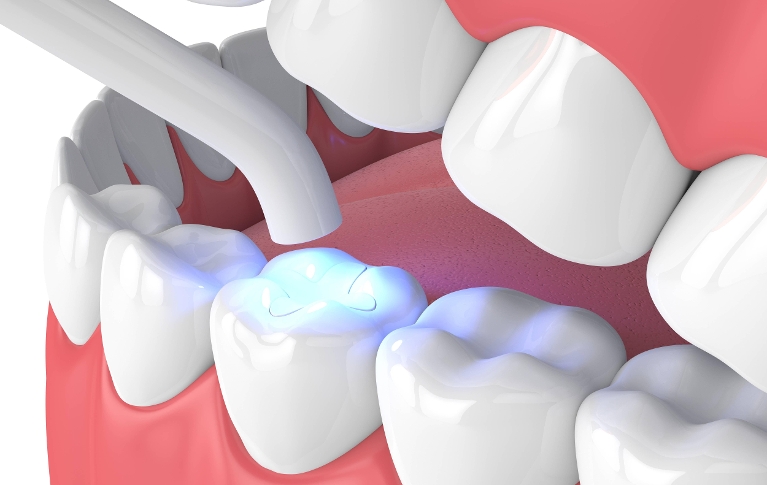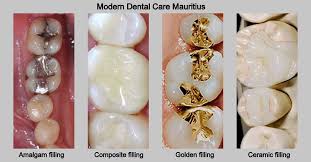Dental Fillings in Coral Springs, Florida
Dental fillings are among the more common procedures that dentists perform. The chances are good that you had at least one filling in the past. You can work with your dentist to choose the best type of filling and relax during the procedure. Though many patients find that they can head back to work or home after their appointments, others find that they need some time to let the anesthesia wear off. At Quesada Dental, we can help you choose the right type of filling and ensure that your procedure goes smoothly when you choose our Coral Springs office.
Dentistry Excellencey
Why Do You Need Fillings?
Also called cavity fillings, this is the procedure that your dentist uses when you have a cavity. You need x-rays taken every six months because not all cavities present on the outside of the tooth. They often start inside and slowly break through the enamel, which is when you see a small black or dark brown spot on your tooth. The filling removes the decayed area inside the pulp or tissue and adds a protective coating. Fillings can prevent cavities from growing worse.

Types of Dental Fillings
Before scheduling an appointment for dental fillings in Coral Springs, take some time to learn about the fillings that are available. Silver amalgam is one of the more popular options because it is the most affordable. Dentists often recommend this material for back teeth and those that do not show when you smile. This type of filling uses a silver material that doesn’t match your teeth. Silver amalgam may contain trace amounts of mercury that can cause problems in the future. Gold fillings are also popular. As they use real gold, they are more expensive but can last for up to 10 years or longer.
Another popular option among patients is composite fillings. They like that the dentist can blend the materials to make a substance that matches the color of their natural teeth. If you have a cavity on one of your front teeth, you might choose a composite filling because no one will know that it’s there. Children who need fillings can choose an acrylic filling. This is a good choice because it uses fluoride that strengthens their teeth. Acrylic fillings work especially well in baby teeth.

Before scheduling an appointment for dental fillings in Coral Springs, take some time to learn about the fillings that are available. Silver amalgam is one of the more popular options because it is the most affordable. Dentists often recommend this material for back teeth and those that do not show when you smile. This type of filling uses a silver material that doesn’t match your teeth. Silver amalgam may contain trace amounts of mercury that can cause problems in the future. Gold fillings are also popular. As they use real gold, they are more expensive but can last for up to 10 years or longer.
 Another popular option among patients is composite fillings. They like that the dentist can blend the materials to make a substance that matches the color of their natural teeth. If you have a cavity on one of your front teeth, you might choose a composite filling because no one will know that it’s there. Children who need fillings can choose an acrylic filling. This is a good choice because it uses fluoride that strengthens their teeth. Acrylic fillings work especially well in baby teeth.
Another popular option among patients is composite fillings. They like that the dentist can blend the materials to make a substance that matches the color of their natural teeth. If you have a cavity on one of your front teeth, you might choose a composite filling because no one will know that it’s there. Children who need fillings can choose an acrylic filling. This is a good choice because it uses fluoride that strengthens their teeth. Acrylic fillings work especially well in baby teeth.
What is the Cavity Filling Procedure?
The filling procedure includes multiple steps. You will first receive some type of anesthesia. Though the dentist may use an injection first, you can opt for a numbing gel first. Only after making sure that the gel worked will the dentist use an injection that numbs your whole mouth. It typically takes up to 60 seconds for the anesthesia to start working. You can rest assured that you won’t feel anything as the dentist works on your tooth. Though you may only need one tooth filled, the dentist can work on multiple teeth during your appointment.
Using a drill, the dentist will slowly remove all of the decayed portions of the tooth. This may take several minutes or longer, but it’s the best way to ensure that the dentist removes the entire cavity. The dentist then uses a tool to suction out any tooth debris left behind before placing the filling material that you chose inside the tooth. He adds an adhesive to the surface to seal the tooth and make sure that it remains in place. If you choose a composite or similar material, the dentist needs to use a bonding agent on the surface of the tooth, too.
The last thing that the dentist does is the sanding step. If the filling has a jagged edge or rough surface, you might cut your tongue when you speak or chew. The dentist will use special tools to smooth the surface and remove any rough spots. You will notice the dentist using other tools to polish the surface, too. While you need to keep your mouth open during the procedure, you should only feel some mild discomfort. The dentist has tools that remove debris and excess moisture from your mouth.

What to Expect?
One of the nice things about dental fillings is that the dentist can do one during a routine appointment. When you come in for your twice-annual exam, the dentist will take x-rays and tell you about any cavities that he found. You can then have the cavities filled during your appointment. Though some worry that fillings will hurt, the whole process takes less than an hour. With the anesthesia that you receive, you don’t need to worry about feeling pain. Most patients notice some minor discomfort during the appointment and some mild pain that lasts for a few hours or less.
Benefits of Dental Fillings
You should consider the top dental filling benefits before making an appointment. One benefit is that a filling today can reduce the risks that you need expensive treatments later. If you leave a cavity untreated, the decay can spread and break down the internal structure of the tooth. You may need a root canal and crown to repair the tooth later, but there is always a risk that you might lose the tooth, too. Dental fillings also come in different types that fit all budgets, even if you don’t have dental insurance.
Filling Aftercare Instructions
Patients often look at the dental fillings FAQs section because they want to know what to do when they go home. Most anesthesia wears off within two to four hours after your appointment, but some patients still feel numb for up to seven hours. You should avoid eating and drinking until the numbness wears off to avoid the risk that you might hurt your mouth from foods or drinks that are too hot or cold. Eating when your mouth is numb can also cause you to bite your mouth or cheek. We also recommend that you choose soft foods for the next 24 hours, though you might feel comfortable with harder foods by the end of the day.
Who Needs Dental Filling Procedures?
The only way to tell if you need a dental filling is with a dental appointment. Experts recommend that you see a dentist at least once every six months. While you might assume that you can identify a cavity, you may not experience any symptoms until the cavity breaks through the surface. Those symptoms can include pain when eating or chewing and pain that occurs when you expose your tooth to hot or cold temperatures. A dental filling can save your tooth from the risk of future decay and help you avoid a root canal.
Get Your Teeth Filled Today
The longer that you put off the cavity fillings that you need, the more work the dentist will need to do later. While you can avoid a tooth that hurts a little, you cannot avoid a cavity that breaks through the enamel. That cavity can cause pain every time that you eat and even when you open your mouth. Dr. Pedro Quesada knows that you likely feel nervous about seeing the dentist and especially with dental fillings. He wants you to know that you have no reason to worry. Call today to schedule an appointment for your dental fillings in Coral Springs.